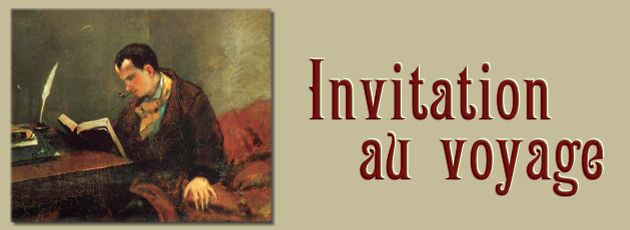
Revolution in the Caribbean: Betances, Haiti and the Antillean Confederation1
Jossianna Arroyo, University of Texas, Austin
They happily supported, although uncomfortably, the condition given by the riddle’s author, to respect the right to secrecy, and that answers should not be revealed unless they were discovered […]Vaguely alarmed, the priest could not stop thinking that this riddle-game started to look like a Masonic ritual.
—Ana Lydia Vega “El tramo de la muda” 120-121.(2)
I. Technologies
In the short story “El tramo de la muda” (“The trail of La Muda”) Puerto Rican writer Ana Lydia Vega tackles the relationship between revolution, secrecy and politics in the Puerto Rican nineteenth-century. The protagonist of the story, a well-spoken mulatto, molded on the figure of Ramón Emeterio Betances, accompanies various Peninsular passengers in a horse-carriage. Crossing the trail of La Muda he entertains them with a series of riddles that are telling them clues on where, when and how the 1868 independence conspiracy will begin. Every time they fail a riddle, they need to pay him. As the game progresses and the passengers fail to read all the clues, they end up losing their money. When the passenger exits the carriage, some words, written with his tobacco-stump, appear on the door: “¡GRACIAS POR CONTRIBUIR! CAPA PRIETO y PORVENIR” (Thanks for your contribution! Capá Prieto for the Future!) (126). It is from these words that the group discovers that there is obviously a Creole plan to revolt and that they were tricked to pay for it. Capá Prieto was one of the few secret societies involved in the Lares Revolt of 1868. To plan a revolution, secrecy and the “open secret” need to coexist. “The Mute” (La Muda) allegorizes these links between secrecy and revolution. Betances is the pragmatic leader-activist who playfully tricks them.
José Pérez-Morris identifies Capá Prieto as a Masonic lodge. Other historians such as Lidio Cruz-Monclova, argues that although some of these associations used Masonic symbolism, mainly secret codes in letters, and handshakes, they were not Masonic entirely, but used Masonic codes for political purposes. The coexistence of both secret societies with revolutionary-pro-independence aspirations and Masonic lodges that supported independence was central to the way politics was articulated in the Spanish Caribbean after 1860. Their role was not always radical, as some lodges were pro-Peninsular, while others used liberal changes to Spain’s imperial politics to move their own Creole definitions of sovereignty for both islands. After 1868, Cuba’s successful Grito de Yara, and the parallel Grito de Lares in Puerto Rico, Masonic lodges and their associates forged a trans-Antillean coalition of forces in which leaders from Haiti, the Dominican Republic, Puerto Rico and Cuba all worked together for similar ends. They all spoke the common language of Freemasonry in their letters, codes and political pamphlets, a language able to facilitate alliances across national borders and ethnic differences. Beginning most notably in the 1860’s and continuing to 1898, Spain declared a “state of emergency” in the Spanish Antilles due to Cuba’s successful insurrection, and Puerto Ricos’ prosecution-exile of conspiracy leaders. This “state of emergency” became commonplace throughout the Caribbean, while the dissemination of technologies of imperial social warfare resulted in new forms of resistance and negotiation.
although some of these associations used Masonic symbolism, mainly secret codes in letters, and handshakes, they were not Masonic entirely, but used Masonic codes for political purposes. The coexistence of both secret societies with revolutionary-pro-independence aspirations and Masonic lodges that supported independence was central to the way politics was articulated in the Spanish Caribbean after 1860. Their role was not always radical, as some lodges were pro-Peninsular, while others used liberal changes to Spain’s imperial politics to move their own Creole definitions of sovereignty for both islands. After 1868, Cuba’s successful Grito de Yara, and the parallel Grito de Lares in Puerto Rico, Masonic lodges and their associates forged a trans-Antillean coalition of forces in which leaders from Haiti, the Dominican Republic, Puerto Rico and Cuba all worked together for similar ends. They all spoke the common language of Freemasonry in their letters, codes and political pamphlets, a language able to facilitate alliances across national borders and ethnic differences. Beginning most notably in the 1860’s and continuing to 1898, Spain declared a “state of emergency” in the Spanish Antilles due to Cuba’s successful insurrection, and Puerto Ricos’ prosecution-exile of conspiracy leaders. This “state of emergency” became commonplace throughout the Caribbean, while the dissemination of technologies of imperial social warfare resulted in new forms of resistance and negotiation.
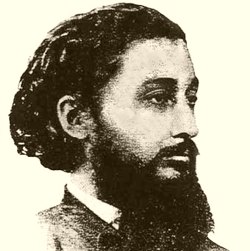 This essay focuses on Ramón E. Betances, the mulatto Masonic leader and ideologue of the Antillean Confederation (Confederación Antillana) movement. In particular, it offers an analysis of Betances trans-Antillean coalitions in this period. It studies Betances’ little known writings on Haiti and the Haitian Revolution, as well as as explores his connections to the island of Hispaniola as a whole.
This essay focuses on Ramón E. Betances, the mulatto Masonic leader and ideologue of the Antillean Confederation (Confederación Antillana) movement. In particular, it offers an analysis of Betances trans-Antillean coalitions in this period. It studies Betances’ little known writings on Haiti and the Haitian Revolution, as well as as explores his connections to the island of Hispaniola as a whole.
Haiti exercised an important historical and political influence over the communities of the Spanish Caribbean and Afro-diasporic communities within the United States. My analysis will not only provide the tools needed to garner a new understanding of the radical complexities (both racially and socially) of the Confederación Antillana (Antillean Confederation) project proposed by Betances and Eugenio María de Hostos; it will also underscore the foundational character of this project, inasmuch as it created cross-national dialogues and connections within what Frank Guridy has called “Afro-diasporic networks.” It is my contention that José Martí’s critique of race and empire in the late 1890s, a critique that Laura Lomas calls radical trans-Americanism, owes more than is generally recognized to the earlier political languages of Freemasonry wielded by Betances and other leaders, and to the visions of race and politics articulated by such Dominican and Haitian leaders as Antenor Firmin and Pedro F. Bonó. The internationalist perspective informing the political languages of Afro-diasporic Freemasonry (languages which national histories have generally erased), defined trans-cultural “technologies” as the critically situated stores of knowledge that enable community formation and political solidarity.
While the war in Cuba provided Martí with the pragmatic political ideal of a raceless nation, Betances and the earlier leaders of the Antillean Confederation started years earlier to define processes of race and class identification to define forms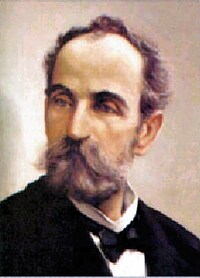 of political solidarity. Although Hostos sought to erase Haiti as a viable political and social example for the Spanish Caribbean as he makes clear in his novel, La peregrinación de Bayoán (1863), Betances’ political dialogues with Haiti suggested the possible formation of new configurations and alliances.(3) Clearly these two voices advocated very different, and conflicting notions of nationhood and race; while Hostos defined the nation as the white Creole classes in their struggles and negotiations with local metropolitan powers, Betances appealed to a nation rooted in the tradition of Caribbean radical mulatto/black thought and expressed in the international Masonic-diasporic networks. In this sense, José Martí’s trans-American critiques are clearly a fusion between these two opposing perspectives. By closely examining the biography of Ramón E. Betances as a political-diasporic leader, and more importantly, carefully analyzing his Masonic speeches on Haiti, I hope to reveal the complexities of these trans-Caribbean debates on race and sovereignty. Debates which emerged from their own political context but which continue to be relevant to contemporary discussions about Pan-Latino or Pan-Caribbean solidarities in the United States.
of political solidarity. Although Hostos sought to erase Haiti as a viable political and social example for the Spanish Caribbean as he makes clear in his novel, La peregrinación de Bayoán (1863), Betances’ political dialogues with Haiti suggested the possible formation of new configurations and alliances.(3) Clearly these two voices advocated very different, and conflicting notions of nationhood and race; while Hostos defined the nation as the white Creole classes in their struggles and negotiations with local metropolitan powers, Betances appealed to a nation rooted in the tradition of Caribbean radical mulatto/black thought and expressed in the international Masonic-diasporic networks. In this sense, José Martí’s trans-American critiques are clearly a fusion between these two opposing perspectives. By closely examining the biography of Ramón E. Betances as a political-diasporic leader, and more importantly, carefully analyzing his Masonic speeches on Haiti, I hope to reveal the complexities of these trans-Caribbean debates on race and sovereignty. Debates which emerged from their own political context but which continue to be relevant to contemporary discussions about Pan-Latino or Pan-Caribbean solidarities in the United States.
Betances, a diasporic figure, viewed the island of Hispaniola (Haiti/Dominican Republic) as the historical site from whence the war against imperial Spain could be launched. His writings on Haiti progress from the disavowed yet omnipresent geographies of fear (Fischer), to the utopian longings of black populations throughout the Americas (Mirabal), to the articulation of new political solidarities and forms of government for the Spanish Caribbean. Enmeshed within his use of the Masonic languages of freedom, equality and brotherhood, ideas about race and blackness became central to his visions of governance and political solidarity, especially in regards to the project of the Confederación Antillana.
II. El Antillano
Ramón E. Betances, a cosmopolitan yet under studied figure in Puerto Rican Studies, called himself “El Antillano” but lived most of his life in exile. Born in Cabo Rojo, Puerto Rico, to Dominican parents, Betances was initiated into Freemasonry in the Unión Germana lodge, located in the western town of San Germán, whose members were subject to the jurisdiction of the Oriente Nacional lodge of Santo Domingo (Torres, José G. “Apéndice, Bosquejo Histórico de la Masonería en Puerto Rico”, 234). In 1840, shortly after his migrating to the Spanish colony of Puerto Rico with his family, Felipe Betances (Ramón’s father) had had to publicly “whiten his blood” (proving “limpieza de sangre) in the Cabo Rojo courthouse in order to successfully marry his daughter into a local Creole family. During the trial, Felipe Betances claimed that he belonged to a distinguished family on his mother’s side, and that his father’s “Betanzos” family was widely recognized as “blancos llanos,” a term from the eastern regions of Hispaniola referring mainly to propertyless mulattoes. In the Dominican Republic at that time, black or mulatto property owners were granted privileges as “blancos de la tierra,” but the propertyless “blancos llanos” did not have the same privileged social standing.(4)
Felipe Betances ultimately won his case, not only enabling his daughter to marry into a distinguished white family, but also erasing the mulatto origins of his father’s family, that is, until his son Ramón began to reclaim those origins as part of a radical political tradition associated with blackness. From the archival transcriptions of the 1840 case, it is clear that in the Spanish Caribbean of Betances’ day, whiteness was associated with adjectives like “distinction,” “honorability,” and “respectability,” while blackness was generally equated with unknown or disputed origins and “dishonorable” associations.(5) One can clearly observe through the renowned case of Felipe Betances how concepts of blackness in Hispaniola became intertwined with those developing in Puerto Rico, where white immigrants – mainly Jewish, Corsican and Iberian – continued to arrive from Costa Firme (Venezuela, Colombia, Curazao) as a result of the wars of independence and the Cédula de Gracias (1815).(6)
Whiteness, as well as blackness, were changing and evolving as social signifiers in the early nineteenth-century insular Caribbean. Raquel Rosario has found that the revolution of Saint Domingue and the purchase of Louisiana resulted in a significant migration of families to the southwest region of Puerto Rico. Of the many landowners, farm laborers, carpenters, and shoemakers who came to Puerto Rico, Rosario claims that 59% were blacks (87).(7) Several of the families who migrated from Guarico (Saint Domingue/Haiti) established themselves in the western town of Mayaguez, owned acres of land, and even had slaves. Nevertheless, documents identify these families as pardos or mulattoes. In her of study on Dominican and Haitian migration to Puerto Rico dating back as early as 1796 and the Treaty of Basilea, Haydeé Reichard explores the fear of a black slave rebellion in Puerto Rico, or what Governor Ramón de Castro called “the Haitian syndrome.” The western town of Aguadilla, where many immigrants settled, witnessed one of the several black rebellions that erupted in Puerto Rico after 1795. According to official reports, more than 20 slaves were arrested or killed in Aguadilla, where black rebels rose up “in imitation of the blacks of Guarico, the French colony.”(8)
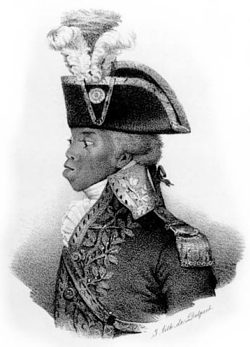 As historians and critics have shown, the meanings of blackness and whiteness began to change on the island of Hispaniola in the wake of Toussaint L’Overture’s 1801 invasion of the eastern part of the island and the subsequent years of Haitian occupation (1822-1844). While many elite Dominicans rejected Haitians blackness and enacted their sense of social and cultural superiority through appeals to whiteness and Hispanic-Peninsular origins, non-elite Dominicans articulated a socio-political discourse on blackness that centered on the processes of abolition. In November 15, 1821 several frontier towns near the border raised the Haitian flag in a sign of independence. While some elite Dominicans declared their independence from Haiti and named the new nation “The Spanish Haiti” or “El Haití Español” they also sought alliances with Gran Colombia in South America. Former slaves and political leaders who supported emancipation ally with Jean Pierre
As historians and critics have shown, the meanings of blackness and whiteness began to change on the island of Hispaniola in the wake of Toussaint L’Overture’s 1801 invasion of the eastern part of the island and the subsequent years of Haitian occupation (1822-1844). While many elite Dominicans rejected Haitians blackness and enacted their sense of social and cultural superiority through appeals to whiteness and Hispanic-Peninsular origins, non-elite Dominicans articulated a socio-political discourse on blackness that centered on the processes of abolition. In November 15, 1821 several frontier towns near the border raised the Haitian flag in a sign of independence. While some elite Dominicans declared their independence from Haiti and named the new nation “The Spanish Haiti” or “El Haití Español” they also sought alliances with Gran Colombia in South America. Former slaves and political leaders who supported emancipation ally with Jean Pierre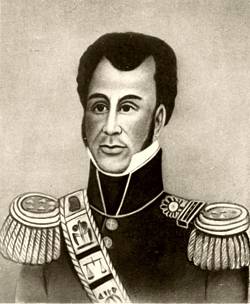 Boyer forces to keep the abolition of slavery in all the territory. Thus, competing racial discourses linked whiteness with respectability, social status and Hispanic white-Creole alliances, and blackness with Haiti, revolution, abolitionism and anti-slavery politics. Betances’ political solidarities with blackness and with Haiti were clearly different from the affiliations of his fellow colleagues in the Antillean Confederation who hailed from other islands of the Spanish Caribbean, like Eugenio M. Hostos. My own view echoes José Buscaglia’s important insight, that mulatto-solidarities in the Spanish Caribbean offer important political strategies to anti-imperial politics.(9)
Boyer forces to keep the abolition of slavery in all the territory. Thus, competing racial discourses linked whiteness with respectability, social status and Hispanic white-Creole alliances, and blackness with Haiti, revolution, abolitionism and anti-slavery politics. Betances’ political solidarities with blackness and with Haiti were clearly different from the affiliations of his fellow colleagues in the Antillean Confederation who hailed from other islands of the Spanish Caribbean, like Eugenio M. Hostos. My own view echoes José Buscaglia’s important insight, that mulatto-solidarities in the Spanish Caribbean offer important political strategies to anti-imperial politics.(9)
One could argue that Betances’ more inclusive views of blackness emerged from the exigencies of the particular historical conjuncture during which he was writing. Raised in a liberal family, Ramón E. Betances became involved from an early age with abolitionist, antislavery and Masonic radical discourses of independence in Puerto Rico. While in medical school in Tolouse, France, young Ramón witnessed the 1848 Commune uprisings and thereby received first-hand instruction on the languages of revolution and social utopianism (i.e. Saint Simon and Blanqui). It was during his years in France that he arranged to marry his second cousin, Carmen Henry. However, after traveling from Cabo Rojo to Paris, his betrothed cousin became gravely ill and died 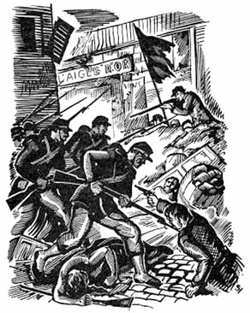 just two weeks before the wedding was to take place. Betances returned to Puerto Rico with Carmen’s casket, buried the body in a cemetery in Cabo Rojo, and spent the following days and weeks at her burial site. For the rest of his life, he neither married nor lived with any woman, deciding instead to dedicate his life to medicine and politics. He would practice medicine in Mayaguez and Cabo Rojo, helping slaves and the
just two weeks before the wedding was to take place. Betances returned to Puerto Rico with Carmen’s casket, buried the body in a cemetery in Cabo Rojo, and spent the following days and weeks at her burial site. For the rest of his life, he neither married nor lived with any woman, deciding instead to dedicate his life to medicine and politics. He would practice medicine in Mayaguez and Cabo Rojo, helping slaves and the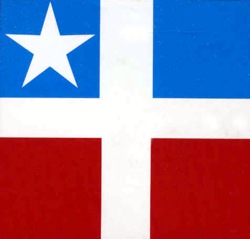 poor black and mulatto populations during the cholera plague. Eventually, he began to free slave children presented to the baptismal font, a practice that offered the first evidence of his being a activist and “social agitator.” After the failure of the Grito de Lares in September 1868, Betances went into political exile in other parts of the Caribbean, Venezuela, the United States and finally France.
poor black and mulatto populations during the cholera plague. Eventually, he began to free slave children presented to the baptismal font, a practice that offered the first evidence of his being a activist and “social agitator.” After the failure of the Grito de Lares in September 1868, Betances went into political exile in other parts of the Caribbean, Venezuela, the United States and finally France.
After brief periods of exile in St. Thomas, Venezuela and New York, Betances moved to Jacmel, Haiti, where he spent the next five years (1870-1875). As a doctor, political mediator and eventually a delegate in the Cuban Republican Party, he was able to befriend a wide array of politicians, intellectuals and common folk. The Betances’ family had a long political history with Haiti, centered on the defense of Dominican nationalism and sovereignty. Betances’ grandfather participated in the 1844 “Trinitaria Movement” ousting then-president Boyer and ending the Haitian occupation of the Dominican Republic. Twenty years later Ramón E. Betances, worked in a political coalition with Haiti during the Restoration War of the 1860’s. Haiti played a key supportive role in the effort to prevent Spain from “restoring” the Dominican Republic to colonial status, and it was during this juncture that Betances emerged as a key conciliatory figure between the anti-colonial movements on the island of Hispaniola and those in Cuba and Puerto Rico. For 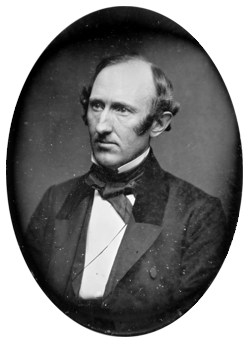 Betances, republicanism was linked to abolitionism and the glorification of Haitian leaders such as Toussaint L’Ouverture. In 1869, Betances translated U.S. abolitionist Wendell Phillips’ essay “Toussaint L’Ouverture” into Spanish and published it in the form of a political pamphlet entitled Toussaint L’Ouverture: Discurso de Wendell Phillips. Traducido del inglés por un Puerto-riqueño.(10) Around the same time he wrote an essay entitled A Cuba Libre: Ensayo sobre Alejandro Petión, which he published in New York.
Betances, republicanism was linked to abolitionism and the glorification of Haitian leaders such as Toussaint L’Ouverture. In 1869, Betances translated U.S. abolitionist Wendell Phillips’ essay “Toussaint L’Ouverture” into Spanish and published it in the form of a political pamphlet entitled Toussaint L’Ouverture: Discurso de Wendell Phillips. Traducido del inglés por un Puerto-riqueño.(10) Around the same time he wrote an essay entitled A Cuba Libre: Ensayo sobre Alejandro Petión, which he published in New York.
Betances relied in his writings upon the politics of translation as a strategic technology for ethnic crossovers and Pan-Caribbean affiliation. Historians, who have been mining archives throughout the Atlantic in an effort to recover the entire body of Betances’ journalistic, literary and political writings in Spanish, English and French, remain perplexed by the quality, clarity and intelligence of his political views.(11) Masonic writing at the turn of the century fell into three main areas: 1) writings related to the history of Freemasonry, covered mostly by Masonic historians or brothers who held positions as Lodge Secretaries; 2) writings related to the lodge business, both international and local (international meetings, Masonic laws, irregular or new lodge chapters), mostly composed by Grand Masters or Secretaries holding international positions; and 3) political writings of Masonic oratory or speeches, which in the case of Creole lodges, are characterized by revolutionary language. Of these three kinds of writings, Betances is most identified with the third; for he was a political lobbyist and strategist who used his Masonic alliances to organize secret political missions. In this sense, his role was similar to the one exercised by José Martí and Antonio Maceo within their respective exiled communities in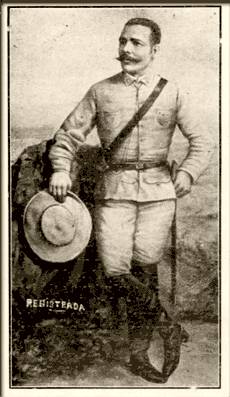 Key West, New York, Costa Rica and Jamaica. That is, he was an orator, and his most important contributions to Freemasonry – at least from the perspective of the historical documents – were the speeches he wrote which were to be read and performed at Masonic lodge tenidas or weekly meetings.(12)
Key West, New York, Costa Rica and Jamaica. That is, he was an orator, and his most important contributions to Freemasonry – at least from the perspective of the historical documents – were the speeches he wrote which were to be read and performed at Masonic lodge tenidas or weekly meetings.(12)
Referred to as “el desterrado” (“the landless one”) by his main historical analyst and biographer Félix Ojeda Reyes, Betances truly embodies a circum-Atlantic diasporic identity. Having lived for years in exile, first as a student in France and then in St. Thomas and eventually France, Betances was accustomed to discussing Toussaint L’Ouverture, Alexandre Pétion, and the other leaders of Haitian Independence. More than other intellectuals from the Spanish Caribbean, Betances was culturally and politically connected to the histories of Hispaniola. Because of his paternal ancestry, his political and familial connections to the island remained strong. His writings offer evidence of the support he gave to Gregorio Luperón during the Restoration War, and in this sense, Betances was one of the few intellectuals from the Spanish Caribbean who advocated an open and respectful relationship between the bordering nations of Hispaniola. He was a political ally of both the Dominican Republic and Haiti, and he argued fervently that the Dominican Republic and other nations of the Spanish Caribbean needed to learn from Haiti’s constitutional example and revolutionary solidarity, as well as from its political divisions and mistakes.
A familiarity with French history, culture and language was not only a natural consequence of Betances’ life in exile; it also became the strategic location from which he most frequently articulated his political arguments. As the leading figure of the Cuba Libre movement among exiled communities in Paris from the 1870s to the 1890s, Betances relied upon French as his language of communication, writing and translation. He worked as the editor of the journal Republique Cubain, and authored many books and letters related to the revolutionary effort. Understanding the context in which Betances produced his French writings, and his subsequent essay on Alexandre Pétion, is essential; for in these essays, he manages to weave together into one history a series of histories that national narratives generally isolate from each other, including the French Commune, Haitian independence (1804), the colonial histories of Puerto Rico, Cuba, and Hispaniola, and the triangular relationship between these colonies, Spain, and the United States.
To escape the censorship and vigilance of the Spanish colonial establishment, to acquire passports and licenses to travel, to relocate from country to country, and to repeatedly change residences (New York, St. Thomas, Venezuela), Betances had to rely upon connections within the transnational Masonic brotherhood as well as within the U.S. and British embassies. Like other revolutionary leaders at the turn-of-the-century (and even today), Betances learned at an early age to take advantage of geopolitical conflicts and imperial rivalries within the Caribbean Basin. Central to his political technologies were the negotiations he carried out with spies, double-agents and ministers, all arranged through the secret rituals and codes of his Masonic alliances.
Ada Suárez Díaz has suggested that, for nationalist historians in Puerto Rico, one of the most perplexing tasks is to make sense of Betances’ reliance upon U.S. or British consulate protection to escape troublesome exiles or arrests. For Betances, a technology like the language of transcultural agency escapes the limits of hegemonic nationalist affiliation, for it can only be deciphered through diasporic connections or acts of political and social defiance articulating a modern double consciousness. Betances identified this modern stance with the body; a body which – like all colonial subjects – is fragmented, tortured, exiled, and condemned to barrenness; a body which translates the nexus between the local and the universal into the means of overcoming social death, or in other words, a means of survival.
III. Haiti and the Confederación Antillana
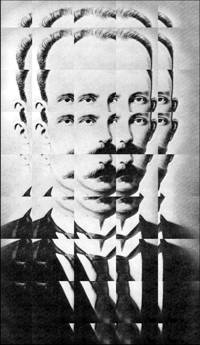 One of the main problems for scholars like myself, who examine social thought in the Spanish Caribbean in relation to the processes of racialization and diaspora, involves two related questions: why did radical thinkers such as José Martí and Eugenio María de Hostos turn their backs on Haiti in the 1880s and 1890s; and how did they manage to construct discourses in favor of racial and gender equality while at the same time erasing or disavowing Haiti? Haiti was the first nation in Latin America to abolish slavery and the only republic that constitutionally declared all of its citizens black.(13) Obviously, the nation of Haiti and the Haitian people as a whole paid a high price for that declaration.
One of the main problems for scholars like myself, who examine social thought in the Spanish Caribbean in relation to the processes of racialization and diaspora, involves two related questions: why did radical thinkers such as José Martí and Eugenio María de Hostos turn their backs on Haiti in the 1880s and 1890s; and how did they manage to construct discourses in favor of racial and gender equality while at the same time erasing or disavowing Haiti? Haiti was the first nation in Latin America to abolish slavery and the only republic that constitutionally declared all of its citizens black.(13) Obviously, the nation of Haiti and the Haitian people as a whole paid a high price for that declaration.
For many historians, the answers to the two aforementioned questions are political and strategic in nature.(14) By the 1890s, the Haitian nation had finally been recognized by the U.S. but was wracked by civil war and divided by race-based partisan politics (black vs. mulatto). Even as José Martí embraced the national unity of the races in Cuba in his famous Manifesto de Monte Cristi (so named for the town on the border between Haiti and the Dominican Republic where Martí signed the manifesto, a border zone that remains contested to this day), Haiti was far from a politically stable nation, divided both by competing U.S. and European economic interests and by ongoing strife between mulattos and blacks. As early as the 1860’s, sociologist Eugenio María de Hostos had warned of the “danger of Haiti,” discouraging its adoption as a political model for projects of decolonization in the Spanish Caribbean.
In a political novel from this period entitled La peregrinación de Bayoán (1863), Hostos presents the story of three characters —Bayoán, Marién and Guarionex— who symbolize, respectively, the islands of Puerto Rico, Cuba and Santo Domingo. From the outset of the novel, it is clear that Hostos’ references to Santo Domingo correspond to Hispaniola (present-day Dominican Republic and Haiti), the first Spanish colony in the Americas. In a journey undertaken by Bayoán—a journey that is both a recollection and a critical reversal of Christopher Colombus’ first voyage—Bayoán’s ship touches down on the coast of St. Nicholas in Haiti, a stop that unravels the following reflection:
Who inhabits this coast? A race that proves that the spirit of men knows no color; that the same spark exists in all of them: the blacks have founded an empire in this place. Mysterious justice! Only you are omnipresent! You give strength to the unhappy African, ripped from his jungles and enslaved by force. Use that strength to break his chains: with the iron, he makes weapons; and with weapons, an empire (62).(15)
Here Hostos presents a Romantic depiction of Haitians, similar to Victor Hugo’s Bug-Jargal or Rousseau’s noble savage. As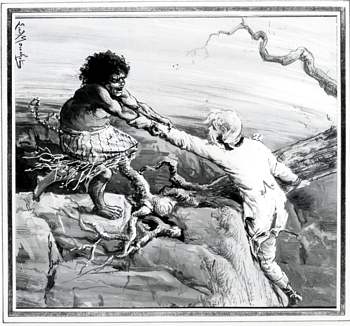 Susan Buck-Morss has noted in “Hegel and Haiti”, slavery was common metaphor in the discourse of political freedom; and in Hostos’ quote, slaves use their work tools to unchain themselves in a quest for freedom. At the same time, the Puerto Rican sociologist gives a negative connotation to the word “empire,” associating it with violence and domination. Justice is “mysterious” in the above-cited passage because it gives slaves their freedom, but teaches them to use their tools to create violence. Hostos suggests that civilization in the hands of Africans is tainted by the experience of slavery; the strength that serves to “free” Africans is misunderstood by blacks, who fail to comprehend freedom as “a force of spirit” in Hegelian terms. The question of the humanity of the slave came to the fore of philosophical and political debates in the wake of the French Revolution, and particularly after Haiti proclaimed its independence in 1804, the first country in Latin America to do so. In that context, the slaves considered by classical legal codes to be socially dead, property and non-human had achieved independence, written constitutions and enacted new laws. The geopolitical implications of Haiti’s independence touched and unsettled the language of universal reason (Buck-Morss).
Susan Buck-Morss has noted in “Hegel and Haiti”, slavery was common metaphor in the discourse of political freedom; and in Hostos’ quote, slaves use their work tools to unchain themselves in a quest for freedom. At the same time, the Puerto Rican sociologist gives a negative connotation to the word “empire,” associating it with violence and domination. Justice is “mysterious” in the above-cited passage because it gives slaves their freedom, but teaches them to use their tools to create violence. Hostos suggests that civilization in the hands of Africans is tainted by the experience of slavery; the strength that serves to “free” Africans is misunderstood by blacks, who fail to comprehend freedom as “a force of spirit” in Hegelian terms. The question of the humanity of the slave came to the fore of philosophical and political debates in the wake of the French Revolution, and particularly after Haiti proclaimed its independence in 1804, the first country in Latin America to do so. In that context, the slaves considered by classical legal codes to be socially dead, property and non-human had achieved independence, written constitutions and enacted new laws. The geopolitical implications of Haiti’s independence touched and unsettled the language of universal reason (Buck-Morss).
Because “empire” is a metaphor for expansion, Hostos here is warning against the export of Haiti’s radical revolution, a radical alternative that was not part of his political vision for the Spanish Caribbean. In Cuba, however, mired in a revolutionary struggle since 1868, intellectuals like José Martí saw things differently. As Martí notes in his posthumous Diario de Campaña de Cabo Haitiano a Dos Ríos, the 1895 Gómez expedition in 1895 received support, hospitality and military aid from Haiti. In describing the departure of the expedition from Cap Haitien, Martí uses a language centered in what Derrida has called the politics of friendship. He weaves Spanish together with French and Krèyol into a poetic language of political brotherhood and solidarity. While in Haiti, Martí spent his nights in houses belonging to Haitian Freemasons to whom he would read articles from Masonic journals, local newspapers and encyclopedias by candlelight. His visits to Hispaniola also proved fruitful in other ways, as Martí made personal contacts that helped him refine his racial theories. In many ways, to think about race in Haiti, but also on the lynching of blacks and the segregation on the U.S. south helped Martí, as Jorge Camacho forcefully argues, to rethink his views on race in Cuba.(16) Camacho sees the duplicity of Martí’s discourses of “racial fraternity” in his writings in the 1890s pointing out that Martí, recreated these imaginaries to strategically built the political unity of the Cuban exile community.17
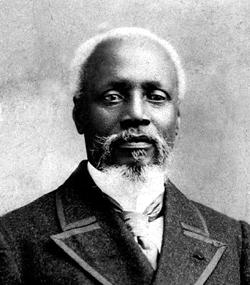 In 1893, two years before the Gómez expedition, Martí met with black Haitian intellectual Antenor Firmin in the border town of Monte Cristi, where he would write his famous Manifiesto de Monte Cristi. Firmin, who had befriended Betances during their exile together in St. Thomas, held long meetings with José Martí during which they talked about the future of the Caribbean islands and Martí heard about Firmin’s vision of an Antillean Confederation. As Brenda Gayle Plummer points out, Firmin lived most of his years of exile in Paris and was the author of De l’égalité des races humaines (1885), the only response written by a black intellectual to Gobineau’s infamous essay L’ inégalité des races humaines. Firmin was the first black intellectual to become a member of the Musée de l’homme in Paris. While a believer in science, Firmin composed his book as a critique of the paradigms of scientific racism, and instead, like Booker T. Washington and other race activists, emphasized the importance of education:
In 1893, two years before the Gómez expedition, Martí met with black Haitian intellectual Antenor Firmin in the border town of Monte Cristi, where he would write his famous Manifiesto de Monte Cristi. Firmin, who had befriended Betances during their exile together in St. Thomas, held long meetings with José Martí during which they talked about the future of the Caribbean islands and Martí heard about Firmin’s vision of an Antillean Confederation. As Brenda Gayle Plummer points out, Firmin lived most of his years of exile in Paris and was the author of De l’égalité des races humaines (1885), the only response written by a black intellectual to Gobineau’s infamous essay L’ inégalité des races humaines. Firmin was the first black intellectual to become a member of the Musée de l’homme in Paris. While a believer in science, Firmin composed his book as a critique of the paradigms of scientific racism, and instead, like Booker T. Washington and other race activists, emphasized the importance of education:
But I take enormous pride in knowing that all Black people, those living today and those to come, will read this work and become convinced that their imperative duty is to work hard and to improve themselves in order to wash away the unjust imputations that have weighed upon their race for so long (Preface vvii).
In preaching educational uplift, Firmin and other writers of his generation failed to criticize the role of structural racism in their respective societies (Plummer). José Martí, as Firmin, believed in the assimilationist power of education for the black race.(18) This educational uplift model, had to be backed with a change in the structures of economic power, but again, Martí did not live to see these changes in Cuba, while Firmin like many African American and mulatto leaders of his time (including Betances), placed his faith in the future of Haiti as the country that would redeem the black race. Nevertheless, for Martí the Haiti of the 1890s appears as a political role model that Cuba should not follow. In a letter to the Director of the Buenos Aires newspaper La Nación (1889) he makes reference to the return of U.S. consul to Hispaniola, ex-slave Frederick Douglass in an unsuccessful mission. About Haiti, he mentions that a U.S. war ship has returned; “cargado de historias de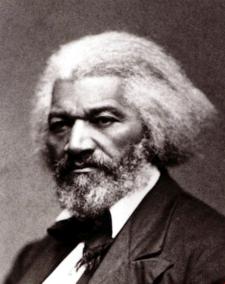 los curas papalois que beben sangre, y del frenesí de los bailadores de bambula” (“En los Estados Unidos,” 131); an ironical comment that puts down the consular initiatives of Douglass vis `a vis Haitian “disorderly” or “Africanized” politics. While he stereotypes Vodou, in another article he cricitizes the political interference of the United States in Haitian-Dominican affairs, “Ni que pudo explicar la súbita terneza y cuidado exquisito con que, con el pretexto de un tratado falso entre Francia y Haití, miró la secretaría de Washington los asuntos haitianos?[…] y perturbó a Santo Domingo con la resurección súbita de derecho de una empresa caduca a la Bahía de Samaná?” (“La política extranjera de Uncle Sam,” 241).
los curas papalois que beben sangre, y del frenesí de los bailadores de bambula” (“En los Estados Unidos,” 131); an ironical comment that puts down the consular initiatives of Douglass vis `a vis Haitian “disorderly” or “Africanized” politics. While he stereotypes Vodou, in another article he cricitizes the political interference of the United States in Haitian-Dominican affairs, “Ni que pudo explicar la súbita terneza y cuidado exquisito con que, con el pretexto de un tratado falso entre Francia y Haití, miró la secretaría de Washington los asuntos haitianos?[…] y perturbó a Santo Domingo con la resurección súbita de derecho de una empresa caduca a la Bahía de Samaná?” (“La política extranjera de Uncle Sam,” 241).
From these quotes, we can conclude that these intellectuals turned their backs on Haiti because the country clearly mirrored their own socio-political fears for their nations. Camacho argues African religions or atavistic customs—such as Abakuá masculine societies— were a problem for Martí who saw only in the fraternity of war, and in education the future of the republic. The realization that Cuba was part of the Caribbean and not a political “exception” became clear to Martí in the late 1890s through his contacts with other Caribbean immigrants in the United States.
What is clear is that in the 1890s, Haiti continued to be displaced, denied and disavowed in the political, racial, and social maps of the Spanish Caribbean (Fischer). Black Dominicans saw themselves differently from the blacks of Haiti, Puerto Ricans did not recognize themselves poor or black as Haitians, and Cubans abhorred the idea of becoming a black nation governed by blacks. Even as José Martí’s trans-American critique of empire is clearly indebted to the theoretical innovations of the Confederación Antillana, it is just as clear that contemporary historians have erased the importance of Haiti and Hispaniola as a whole in the intellectual processes of nation-building in the Caribbean. With the exception of historians Félix Ojeda Reyes, Ada Suárez-Díaz and Paul Estrade, all of whom have insisted upon the importance of Betances’ transnational and diasporic connections and his advocacy of a broad, Antillean political community, national histories still present narratives of racial democracy in which the whitening of the social and political constituencies plays a central role.
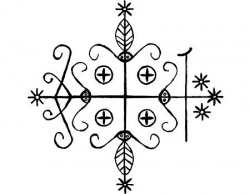 The Haitian Revolution—feared and erased by most Creole elites in Cuba, Puerto Rico, the Dominican Republic, Venezuela, Colombia and Brazil—was at the center of this social imaginary. In the hands of the Creole elites, it became the basis for the ideology and politics of fear; but filtered through channels of communication and translation like Creole and mulatto Freemasonry and the Afro-Diasporic religions of Vodou, Santería, and Abakuá, the Haitian Revolution became an ideology of emancipation. From these communicative networks emerged strong transnational-diasporic languages in which the voices of black, mulatto and Creole Freemasons were central. At the same time, these Freemasons constructed and renegotiated emancipatory ideologies of freedom along with critiques of old and emerging empires (Spain, U.S.), all the while building solidarity amongst different migrant populations.
The Haitian Revolution—feared and erased by most Creole elites in Cuba, Puerto Rico, the Dominican Republic, Venezuela, Colombia and Brazil—was at the center of this social imaginary. In the hands of the Creole elites, it became the basis for the ideology and politics of fear; but filtered through channels of communication and translation like Creole and mulatto Freemasonry and the Afro-Diasporic religions of Vodou, Santería, and Abakuá, the Haitian Revolution became an ideology of emancipation. From these communicative networks emerged strong transnational-diasporic languages in which the voices of black, mulatto and Creole Freemasons were central. At the same time, these Freemasons constructed and renegotiated emancipatory ideologies of freedom along with critiques of old and emerging empires (Spain, U.S.), all the while building solidarity amongst different migrant populations.
As early as 1870, Betances understood that including blacks and mulattoes in the Cuban and Puerto Rican independence movements would challenge the established social hierarchies of race and class that colonial slavery had introduced in these societies. As Aline Helg’s work has shown, portrayals of the Cuban struggle for independence as a “race war” and “another Haiti” created fears among white communities - not only abroad, but also among the same revolutionary white Creoles who directed the movement in Cuba. Helg illustrates these fears most clearly in her analysis of the way Creole leaders treated black military officers like Antonio Maceo and Quintín Banderas both during and after the war. Creole depictions of Antonio Maceo regularly noted that he was the revolutionary leader who held most black popular support, and some among the white revolutionary leadership voiced the fear that he would declare himself “a black dictator,” following the example of Haitians military chiefs of state. In any case, what most interests me is that the Haitian Revolution was a central point of reference for Ramón E. Betances, and that Betances’ understanding of brotherhood – an understanding informed by the experience of Freemasonry – was of fundamental importance to the construction of radical forms of political solidarity in the circum-Atlantic.
III. Technologies and affective politics
Ramón E. Betances arrived in New York in 1869, just one month after the foundation of the Republican Central Junta of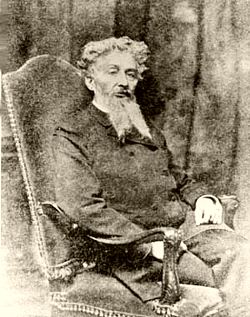 Cuba and Puerto Rico with its Cuban president José F. Lemus and its Puerto Rican secretary José F. Basora (Suárez-Díaz, El Antillano, 161). While in exile in New York, Betances published and translated a number of works intended as political propaganda. In the Atlantic world at the turn-of-the-century, the practice of translation and the circulation of printed propaganda were essential elements in the creation of a charismatic form of affect in politics. Because visual media technologies were less central to politics than they are today, political culture was much more dependent upon the efficient command of the word, whether it be in oratory or incendiary pamphlets. Betances’ dominion over the print technologies of politically-incendiary speech is evident in his most well-known pamphlets. Among these are the tracts he sent from St. Thomas, including the famous “Los 10 mandamientos de los hombres libres” / “The Ten Commandments of Free Men.” In all these pamphlets, Betances makes ample use of capital letters, bold-face type, different fonts and exclamation points.
Cuba and Puerto Rico with its Cuban president José F. Lemus and its Puerto Rican secretary José F. Basora (Suárez-Díaz, El Antillano, 161). While in exile in New York, Betances published and translated a number of works intended as political propaganda. In the Atlantic world at the turn-of-the-century, the practice of translation and the circulation of printed propaganda were essential elements in the creation of a charismatic form of affect in politics. Because visual media technologies were less central to politics than they are today, political culture was much more dependent upon the efficient command of the word, whether it be in oratory or incendiary pamphlets. Betances’ dominion over the print technologies of politically-incendiary speech is evident in his most well-known pamphlets. Among these are the tracts he sent from St. Thomas, including the famous “Los 10 mandamientos de los hombres libres” / “The Ten Commandments of Free Men.” In all these pamphlets, Betances makes ample use of capital letters, bold-face type, different fonts and exclamation points.
 While in New York, he translated abolitionist speeches by Wendell Phillips and several political writings by French author and educator Edouard de Laboulaye, including El partido liberal, su progreso y su porvenir (1869).(19) Many of these translations were either published in newspapers or circulated informally among the exiled communities. One entry from the newspaper La Revolución made this reference to Betances’ translation of Phillips’ speech on Toussaint L’Ouverture:
While in New York, he translated abolitionist speeches by Wendell Phillips and several political writings by French author and educator Edouard de Laboulaye, including El partido liberal, su progreso y su porvenir (1869).(19) Many of these translations were either published in newspapers or circulated informally among the exiled communities. One entry from the newspaper La Revolución made this reference to Betances’ translation of Phillips’ speech on Toussaint L’Ouverture:
"the translation has been published using elegant print in a handsome pamphlet which will be distributed at no cost to Cubans and Puerto Ricans. We strongly encourage this fortifying reading which records the acts, thoughts and feelings of the great man from the Ethiopian race" (author’s translation, Suárez-Díaz, El Antillano 163).
For affective politics, there needs to be a performance to create a “fortified” experience. Betances saw reading and active listening as essential tasks of the community, but understood himself to be the medium for the message. He believed that Toussaint, as a representative of the “great Ethiopian race,” could serve as a symbol of political greatness to Cubans and Puerto Ricans alike, his life exemplifying how unity among blacks could not only empower black military leaders, but also unify the discordant elements of a society in order to struggle and ultimately attain the ultimate goal: independence.(20) Betances’ speeches helped create an affective form of politics, since he composed his discourses with the clear intention of reading the words to an audience.
In this essay on Petión, Betances conflates the biographical details of Pétion’s life (presented as the tale of a self-made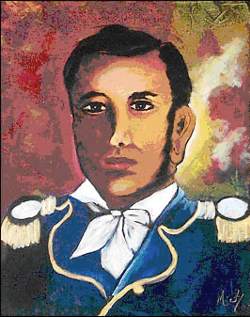 Freemason: a natural son and a humble but virtuous artisan who rises to become a marvelous military leader and independent thinker), with the revolutionary history of events in Haiti. He compares the activism of Vincent Ogé(21) within the sessions of the French Assembly in 1789 to the ineffective posturing within the Spanish legislature, where deputies “like Becerra, discuss the colony’s assimilation to the metropolis, and others like Romero Robledo demand the annulment of reforms, while still others, like the republican E. Castelar, who for patriotic reasons, stopped talking about Santo Domingo altogether” (Súarez Díaz, El Dr. Ramón E. Betances y la abolición de la esclavitud 84).(22) Here then, in an important geopolitical maneuver: Betances uses Ogé’s example to criticize reformist politics in Cuba and Puerto Rico, insisting upon the emptiness of a language that merely “announces the vertigo of tyranny and the birth of a free nation“ (Suárez-Díaz, 84-5). Betances first read this speech as a lecture in a Masonic lodge in Jacmel, Haiti in 1870, but its primary intent was to warn Cuban revolutionaries about the similarities between the Haitian and Cuban revolutions and to advance the causes of slave abolition and independence for Cuba and Puerto Rico. The text of the essay offers ample evidence of the technologies Betances used to reach out to diasporic political networks. The practices of translation, biculturalism, bilingualism, and what Brent Edwards-Hayes has referred to as pan-ethnic identification, are all apparent in this document, along with the discourse of race and racialization. When he first gave the lecture to fellow Freemasons in the Francophone-Krèyol audience, Betances delivered the speech in French; a year later, in 1871, he would translate it into his native Spanish and have it published in New York City.
Freemason: a natural son and a humble but virtuous artisan who rises to become a marvelous military leader and independent thinker), with the revolutionary history of events in Haiti. He compares the activism of Vincent Ogé(21) within the sessions of the French Assembly in 1789 to the ineffective posturing within the Spanish legislature, where deputies “like Becerra, discuss the colony’s assimilation to the metropolis, and others like Romero Robledo demand the annulment of reforms, while still others, like the republican E. Castelar, who for patriotic reasons, stopped talking about Santo Domingo altogether” (Súarez Díaz, El Dr. Ramón E. Betances y la abolición de la esclavitud 84).(22) Here then, in an important geopolitical maneuver: Betances uses Ogé’s example to criticize reformist politics in Cuba and Puerto Rico, insisting upon the emptiness of a language that merely “announces the vertigo of tyranny and the birth of a free nation“ (Suárez-Díaz, 84-5). Betances first read this speech as a lecture in a Masonic lodge in Jacmel, Haiti in 1870, but its primary intent was to warn Cuban revolutionaries about the similarities between the Haitian and Cuban revolutions and to advance the causes of slave abolition and independence for Cuba and Puerto Rico. The text of the essay offers ample evidence of the technologies Betances used to reach out to diasporic political networks. The practices of translation, biculturalism, bilingualism, and what Brent Edwards-Hayes has referred to as pan-ethnic identification, are all apparent in this document, along with the discourse of race and racialization. When he first gave the lecture to fellow Freemasons in the Francophone-Krèyol audience, Betances delivered the speech in French; a year later, in 1871, he would translate it into his native Spanish and have it published in New York City.
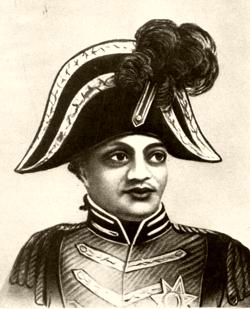 Clearly, Betances was using the example of Haiti as part of a political strategy. Unlike the many revolutionary Cubans in the 1870’s who were afraid to admit similarities between Cuba and Haiti, Betances underscores the parallels in his essay on Pétion. The essay responds to the arguments made by Cubans that Haiti offers only a negative example of the excessive use of force by black and mulatto leaders and the resulting political abandonment by powerful nations. Betances counters this argument by insisting on the idea of Haiti as a nation
Clearly, Betances was using the example of Haiti as part of a political strategy. Unlike the many revolutionary Cubans in the 1870’s who were afraid to admit similarities between Cuba and Haiti, Betances underscores the parallels in his essay on Pétion. The essay responds to the arguments made by Cubans that Haiti offers only a negative example of the excessive use of force by black and mulatto leaders and the resulting political abandonment by powerful nations. Betances counters this argument by insisting on the idea of Haiti as a nation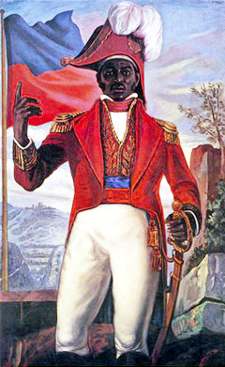 whose radical history achieved a model of strength and revolutionary leadership for Latin America and the Caribbean. While agreeing that abuses of political power were carried out by leaders like Christophe and Dessalines, he reminds his readers-listeners of the existence of a Haitian statesman like Alexandre Pétion who could be held up as a paragon of republican leadership.
whose radical history achieved a model of strength and revolutionary leadership for Latin America and the Caribbean. While agreeing that abuses of political power were carried out by leaders like Christophe and Dessalines, he reminds his readers-listeners of the existence of a Haitian statesman like Alexandre Pétion who could be held up as a paragon of republican leadership.
Haitian forms of constitutional state formation are central to Betances’ arguments regarding the ideal forms of government for future Caribbean republics. What distinguishes his radical writing within the “Cuba Libre” movement is his use of Haiti as a central metaphor for the need for slave abolition in the Spanish Caribbean. That is, Betances not only embraces the Haitian Revolution as a political metaphor to advance an independence agenda for Puerto Rico and Cuba; he also identifies and interprets Alexandre Pétion as the figure who best embodies the will of the people. If from the perspective of the white Creole classes of Spanish America, the dialogue with Haiti is always informed by a “fear of blackness” or “miedo al negro,” Betances, in contrast, champions African blood and racial mixture as the embodiment of sacrifice and the quest for freedom:
[T]he African blood from these sons of the desert, just like the Latin blood from the French, ended up planting the seeds of freedom in American soil; a freedom which the United States denied for so many years, and which Spain continues to deny, to that race which is capable of so much sacrifice. The more oppressed a nation is, the more blood is required to conquer its freedom. As opposed to the Puerto Ricans, who remain silent and complacent, Cuba is proving to the whole world the reality of this formidable, yet indispensable principle: “the ignominy of tyranny can only be washed away with man’s blood; only through effort and sacrifice, can we, as men, take back from heartless hands the independence of the fatherland. (quoted in Suárez-Díaz, El Dr. Ramón E. Betances y la abolición de la esclavitud, 82).(23)
Later in his essay, Betances explores the many episodes within the history of the Haitian Revolution, detailing the terms of what Michel Rolph-Trouillot would call “the war within the war”; that is, the internal conflicts that characterize any revolution. Here Betances emphasizes Pétion’s political acumen over and above his recognized military genius, for he made himself into a statesman able to unify the many dissident forces within the Revolution. The result was “pure politics, human, democratic, and pacifying; [a politics] which, luckily, has become a tradition in Haiti and whose glorious representative is Pétion.” (quoted in Suárez-Díaz, El Dr. Ramón E. Betances y la abolición de la esclavitud 97).(24)
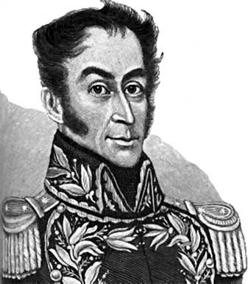 In recalling the famous meeting between Pétion and Simón Bolívar, Betances equates the Haitian president, and indeed the Haitian nation, with ongoing revolutionary struggles in Latin America and the Caribbean. Although Betances and some Puerto Rican radicals expressed support for Pétion’s use of land reform and his projects for social justice, this kind of socio-economic agenda was not supported by most white Creoles and certainly not by all Cuban radicals, many of whom were advocating annexation to the United States rather than outright independence. Among Puerto Rican abolitionists, however, who tended to be much more radical than the planter elites of Western Cuba (Álvarez, Silvia), Pétion’s agrarian reform became a salient revolutionary example. Betances writes in his essay:
In recalling the famous meeting between Pétion and Simón Bolívar, Betances equates the Haitian president, and indeed the Haitian nation, with ongoing revolutionary struggles in Latin America and the Caribbean. Although Betances and some Puerto Rican radicals expressed support for Pétion’s use of land reform and his projects for social justice, this kind of socio-economic agenda was not supported by most white Creoles and certainly not by all Cuban radicals, many of whom were advocating annexation to the United States rather than outright independence. Among Puerto Rican abolitionists, however, who tended to be much more radical than the planter elites of Western Cuba (Álvarez, Silvia), Pétion’s agrarian reform became a salient revolutionary example. Betances writes in his essay:
Pétion’s agrarian reform, distributing land to all, from the most humble soldiers to the most distinguished founders of independence, created a democratic republic of Haiti, converting a bloody horde bewildered by the clashing din of so many battles, into a nation of small property owners, all of whom can see in their homes, the fatherland, their interest in order, and the freedom and glory in the salvation of their nationality. (quoted in Suárez-Díaz, El Dr. Ramón E. Betances y la abolición de la esclavitud 103).(25)
Throughout his discussion of agrarian reform, Betances places the Puerto Rican slave and freed populations at the center of his discussion, but also offers Cuba a possible alternative to its problem of slavery. He locates the land and the landed peasant, or campesino, at the center of his imaginary; the Puerto Rican jíbaro and the Dominican montero are central to his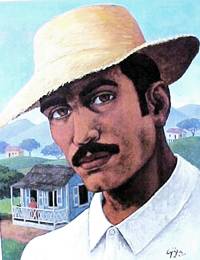 definition of the nation. Moreover, in evoking the models of Haiti and Pétion, Betances not only articulates an Afro-Diasporic and black imaginary of Caribbean nationhood; he also ties that image of nationhood to a particular notion of masculinity. Betances’ gendered image has much in common with Dominican Pedro F. Bonó’s masculine image from the 1856 novel El montero, wherein the montero, identified with nature and the land, becomes the source of national culture. For many Creole writers, this model also corresponded to the guajiro of the eastern provinces of Cuba, birthplace of the Grito de Yara (1868).(26)
definition of the nation. Moreover, in evoking the models of Haiti and Pétion, Betances not only articulates an Afro-Diasporic and black imaginary of Caribbean nationhood; he also ties that image of nationhood to a particular notion of masculinity. Betances’ gendered image has much in common with Dominican Pedro F. Bonó’s masculine image from the 1856 novel El montero, wherein the montero, identified with nature and the land, becomes the source of national culture. For many Creole writers, this model also corresponded to the guajiro of the eastern provinces of Cuba, birthplace of the Grito de Yara (1868).(26)
Betances also uses Pétion as an example of an effective statesman and military leader with a keen understanding of the dangers to Caribbean nations posed by imperial economic policies. Speaking to a Masonic audience in Port au Prince, Haiti, in the 1860’s, Betances warns about a new danger to the Caribbean islands in the emerging imperialism of the United States and the subsequent threat of U.S. military intervention. He observes that what started as the U.S. government negotiating with Dominican dictator Buenaventura Báez for the sale of Samaná Bay in the Dominican Republic, led to further talks about the U.S. purchasing an extensive area in the eastern Caribbean, including the islands of Culebra, Puerto Rico and the harbor of St. Nicholas in the northeastern part of Haiti.(27) In Betances’ words:
The Antilles are facing a moment they have never faced before in history; they now have to decide whether 'to be, or not to be'. We reject this troubling proposal. Now is the precise moment for us to present a united defensive front. Let us act as one in order to ensure our own survival. In vain will an impious dictator attempt to trade away his nation at the expense of his fellow citizens, as was the case in Santo Domingo; of no use will it be for Spain to try to placate Cuba’s insurrection by selling the island to the United States and thus beginning the process of all the Antilles being absorbed by the Anglo- Saxon race. Let us unite. Let us love one another. Together let us build a society of true Freemasons, and only then will we be able to build a temple with foundations so solid that not even the united force of the Saxon and Spanish races will be able to shake them; a temple that we will consecrate to Independence, and on whose frontispiece we will engrave this inscription, as imperishable as the Motherland itself: ‘The Antilles for the Antilleans’. (Ojeda Félix, El desterrado de París 192-93).
In this passage, Betances forges a new ethic of Masonic radical brotherhood in conjunction with love, unity and transnationalism. Betances’ urging of his fellow citizens to struggle against, “the Antilles being absorbed by the Anglo- Saxon race” was also a call to build a temple, “with foundations so solid that not even the united force of the Saxon and Spanish races will be able to shake them.” The temple’s entrance will present a definitive inscription: “The Antilles for the Antilleans,” a phrase that continues to resonate within the contemporary histories of circum-Caribbean nations subject to the ongoing processes of U.S. and European imperialism.
Betances makes this perspective apparent in the Pétion essay by calling for new understandings of “humanity”; ones that will recognize the “human” element in societies which have been enslaved and subjected to the dynamics of colonialism (Maldonado-Torres, Against War). Haiti is the site from which this historical struggle for humanity begins. For Betances, the future of the Spanish Caribbean, and particularly of Cuba and Puerto Rico, depend on a collective understanding of the historical and political realities of colonialism.
After 1898, the military and imperialist supremacy of the United States became a defining factor in the nationalist histories of Puerto Rico, Cuba and Hispaniola. The discourse of liberty and nationhood subsumed the radicalism of the black-mulatto solidarities that had flourished within the transnational and Afro-diasporic-Masonic networks. José Martí died in Dos Ríos in 1895, Betances died in Paris in 1898, and Eugenio María de Hostos became a member of the Puerto Rican Commission (along with other political leaders like Dr. Julio Henna and the novelist Manuel Zeno Gandía), arguing before the U.S. Congress in 1900 to clarify Puerto Rican political status as an “unincorporated territory” of the United States (Arroyo, “La figura del criminal,” 55). Just as Cuba was subjected to U.S. control under its new constitution’s Platt Amendment (1902), the “insular cases” of Puerto Rico, the Philippines, Guam and the Marshall Islands came under the control of a new, U.S.-based, imperial geo-politics. Ultimately, this new imperial order would redefine the nature of military intervention, oppression and human warfare (Spears). It relied anew on race as its organizing principle, enacting segregating civic, commercial, and military codes in its “civilizing mission” and marking the global supremacy of the Anglo-Saxon race over the descendants of the Latin races.
What happened to the radical transnational/trans-racial alliances of the Masonic brotherhoods once the urgency of war dissipated and new neocolonial states were configured under the U.S. empire? Although transnational networks based on Masonic rituals and official activities did continue, the emergence of new nations and neo-colonial states with strong ties to the U.S. weakened Masonic political affiliations in favor of memberships in local and national political parties. Great Worshipful Master Santiago R. Palmer, an earlier supporter of independence before 1898, embraced U.S. intervention in the island, as many radical political leaders did, with the hope that independence would be granted after a few years. Nevertheless, The  Gran Logia Soberana (Great Sovereign Lodge), founded by Palmer and others in 1885, shifted its pro-independence status to forms of non-partisan neo-colonial negotiation. This role made of the Great Sovereign Lodge a bridge between Freemasons in the United States and Latin America.
Gran Logia Soberana (Great Sovereign Lodge), founded by Palmer and others in 1885, shifted its pro-independence status to forms of non-partisan neo-colonial negotiation. This role made of the Great Sovereign Lodge a bridge between Freemasons in the United States and Latin America.
In fact, in September 1922, the First Inter-Antillean Masonic Congress (Primer Congreso Masónico Interantillano) was held in San Juan, Puerto Rico, with delegates from Venezuela, Cuba and the Dominican Republic. The Congress had been convened to discuss the end of World War I, and most importantly, the U.S. military occupations of Haiti (1915-1934) and the Dominican Republic (1916-1924). In an inaugural address exalting the themes of Pan-Americanism, fraternal love, and a new humanism, Puerto Rican Great Worshipful Master Luis Muñoz Morales noted that the idea for the congress had first come up in a 1920 discussion among delegates regarding the role of Freemasonry and political sovereignty in the Dominican Republic, and in particular, whether the nation should become an affiliate of the International Masonic Federation of the League of Nations (Muñoz Morales, “Congreso Masónico Interantillano” 30). That discussion ended with a proposal to hold the congress in Puerto Rico.
By 1948, regional politics would divide the Great Sovereign Lodge of Puerto Rico, as those Freemasons who argued –unsuccessfully- for the Great Lodge to pronounce itself against U.S. colonialism split off to found the Great Eastern National Lodge. This split occurred at a critical conjuncture in Puerto Rican history, when mass support for Pedro Albizu Campos, a Masonic member and President of the Nationalist Party, divided the country and Albizu called for revolutionary armed struggle. Seven years later, four Puerto Rican nationalists would use armed force to assault a public meeting of the U.S. House of Representatives, a confrontation used by U.S. officials to create the image of Puerto Ricans as terrorists and to increase U.S. political repression on the island. By that time, in accordance with its conservative and apolitical reputation, the Great Sovereign Lodge had become an organism for the international dissemination of Puerto Rican arts and cultural rituals, a far cry from the vehicles of radical politics that Creole-based Puerto Rican lodges had been at the turn of the century.(28)
those Freemasons who argued –unsuccessfully- for the Great Lodge to pronounce itself against U.S. colonialism split off to found the Great Eastern National Lodge. This split occurred at a critical conjuncture in Puerto Rican history, when mass support for Pedro Albizu Campos, a Masonic member and President of the Nationalist Party, divided the country and Albizu called for revolutionary armed struggle. Seven years later, four Puerto Rican nationalists would use armed force to assault a public meeting of the U.S. House of Representatives, a confrontation used by U.S. officials to create the image of Puerto Ricans as terrorists and to increase U.S. political repression on the island. By that time, in accordance with its conservative and apolitical reputation, the Great Sovereign Lodge had become an organism for the international dissemination of Puerto Rican arts and cultural rituals, a far cry from the vehicles of radical politics that Creole-based Puerto Rican lodges had been at the turn of the century.(28)
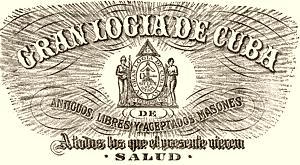 As Eduardo Torres-Cuevas has demonstrated, Freemasons also played a protagonist role in Cuban politics during the first decades of the republic, most notably when they helped overthrow the Machado dictatorship in 1933. In fact, it was the Great Lodge of Cuba that obliged Gerardo Machado, a Grade 33 Freemason, to step down from the Presidency. The Great Lodge of Cuba and the Great Sovereign Lodge of Puerto Rico had strong Masonic connections right up until the triumph of the 1959 Cuban Revolution, after which the connections dissolved. The lodges in Puerto Rico and the countries of Hispaniola, however, were able to maintain their political and economic ties. The Puerto Ricans who migrated to the Dominican Republic—mostly during the sugar cane boom of the 1920s—helped to cement these ties and form part of the broader history of worker mobilization in the West Indies and Caribbean that characterized the period. As for Haiti, the U.S. invasion of 1916 and the institutionalization of Rafael Trujillo’s antihaitianismo politics led to the increased social and economic isolation of the black republic from the political projects of the Spanish Caribbean. Clearly the turn-of-the-century Masonic brotherhoods connecting Puerto Rican, Dominican and Haitian intellectuals like Ramón E. Betances, Antenor Firmin, Pedro F. Bonó, and Eugenio M. de Hostos were a product of their historical moment, when the urgency of the struggle for liberty and independence fueled the possibilities for an Antillean Confederation.
As Eduardo Torres-Cuevas has demonstrated, Freemasons also played a protagonist role in Cuban politics during the first decades of the republic, most notably when they helped overthrow the Machado dictatorship in 1933. In fact, it was the Great Lodge of Cuba that obliged Gerardo Machado, a Grade 33 Freemason, to step down from the Presidency. The Great Lodge of Cuba and the Great Sovereign Lodge of Puerto Rico had strong Masonic connections right up until the triumph of the 1959 Cuban Revolution, after which the connections dissolved. The lodges in Puerto Rico and the countries of Hispaniola, however, were able to maintain their political and economic ties. The Puerto Ricans who migrated to the Dominican Republic—mostly during the sugar cane boom of the 1920s—helped to cement these ties and form part of the broader history of worker mobilization in the West Indies and Caribbean that characterized the period. As for Haiti, the U.S. invasion of 1916 and the institutionalization of Rafael Trujillo’s antihaitianismo politics led to the increased social and economic isolation of the black republic from the political projects of the Spanish Caribbean. Clearly the turn-of-the-century Masonic brotherhoods connecting Puerto Rican, Dominican and Haitian intellectuals like Ramón E. Betances, Antenor Firmin, Pedro F. Bonó, and Eugenio M. de Hostos were a product of their historical moment, when the urgency of the struggle for liberty and independence fueled the possibilities for an Antillean Confederation.
Although we see their limitations when we read these projects from within the teleological, masculine and class-based alliances that typified liberal nation building projects at the turn of the century, it is also true that the Masonic political leadership of Ramón E. Betances and his radical political views are the elements that made these coalitions possible.(29)
Notes
1. This essay is adapted from chapter IV of my book, Writing Secrecy: Technologies in Caribbean Freemasonry (forthcoming by University of Texas P, 2011). I am grateful for the comments of colleagues at the Tepotzlán Institute for Transnational History for the Americas (2008, 2010), Robyn Derby, Elliott Young, David Sartorious, Micol Seigel, Yolanda Martínez-San Miguel, Jorge Giovanetti, David Kazanjian, and Nora Gámez for all their comments. Translations and editing by Barbara Corbett and Roger Gathman.
2. “Acogieron con igual beneplácito aunque con cierta extrañeza, la condición expuesta por su autor de que se respetara el derecho al secreto y no se revelaran las respuestas a menos que fuesen descubiertas […] Vagamente alarmado, el cura no pudo dejar de pensar que aquello empezaba a parecerse a una ceremonia de masones.” See Ana Lydia Vega, “El tramo de la Muda.” Encancaranublado y otros cuentos de naufragio. (Río Piedras: Editorial Antillana, 1990. 115-28).
3. This is clear in Eugenio María de Hostos’ novel La peregrinación de Bayoán (1863) where Haiti is only mentioned in a small passage and political solidarities are represented in the role of the three Spanish-Caribbean islands, Cuba, Dominican Republic and Puerto Rico.
4. See Ginetta Candelario, Black Behind the Ears (Durham: Duke UP, 2008); and Silvio Torres Saillant, “The Tribulations of Blackness.”
5. Shirley E.Thompson makes a similar argument in her analysis of famous cases in New Orleans in the 1850s. See Exiles at Home: The Struggle to Become American in Creole New Orleans. (Cambridge: Harvard University Press, 2009).
6. The Cédula de Gracias was a royal decree imposed by Ferdinand VII in August 1815 to sponsor Spanish and European migration to the island of Puerto Rico. The decree was printed in three languages - Spanish, English and French. Free land was offered to the settlers who arrived in great numbers to work and “develop” the island. Immigrants from the Canary and Baleares Islands (Spain), Corsica, Germany and France migrated from Europe and South America to Puerto Rico. As Angel Quintero-Rivera has shown, these immigrants benefited economically and socially from the their white European status.
7. Some of these mulatto proprietors were landowners in Haiti, such as Guillermo Laborda (84 acres) José Lecode (32 acres), and Felipe Cabral (29 acres). Some landowners were mulatto or black women, including Maria Malerbe, Maria Apolin Piot, Madame Redoli and Madame Ytier. See Raquel Rosario, Los efectos de la revolución de Saint Domingue y de la venta de la Louisiana en Puerto Rico: las migraciones en la isla. Universidad de Puerto Rico, Río Piedras, 1988.
8. This quote is taken from Arturo Morales Carrión, “Primeras resonancias de la Revolución Haitiana en Puerto Rico.” Revista del Centro de Estudios Avanzados de Puerto Rico y El Caribe. 1 (julio-diciembre 1985): 191-95. Quoted in Haydeé Reichard de Cancio, “Los dominicanos en Aguadilla”(http://www.preb.com/geneal/domaguad.htm).
9. Here I am following the main thesis of José Buscaglia-Salgado in his book, Undoing Empire: Race and Nation in the Mulatto Caribbean. (Minneapolis: University of Minnesota P, 2003).
10. Wendell Phillips (1811–1884) was an American abolitionist and advocate for Native Americans. He was an exceptional orator and agitator, advocate and lawyer, writer and debater.
11. See the works of Luis Bonafoux, Paul Estrade, Félix Ojeda Reyes, Ada Suárez-Díaz and literary critic Luis Hernández Aquino in bibliography.
12. As Salvador Brau writes in his Historia de Puerto Rico, “Freemasonry came from Spain to Puerto Rico in 1809, and its print culture, particularly the printing press called “La Fraternidad” (located in San Juan and owned by a famous “Son of the Widow”) started to disseminate Masonic pamphlets and materials. At the same time, the Western towns of San Germán, Cabo Rojo and Mayaguez produced many Masonic followers, mostly among immigrants from Santo Domingo and others initiated in St. Thomas. St. Thomas was an flourishing market for French books and authors such as, Florian, Arlincourt, Mad.Cottin, Saint Pierre, Diderot, Holbach, D’Alembert, Rousseau, Voltaire, and Volney, all translated into Spanish in Paris and Bordeaux by Spanish immigrants.” From Salvador Brau, Historia de Puerto Rico. (San Juan: Editorial Coquí, 1966). Quoted in Ada Suárez-Díaz, El doctor Ramón E. Betances y la abolición de la esclavitud. San Juan: Instituto de Cultura Puertorriqueña, 2005 (6-7).
13. See Sybille Fischer’s discussion of the rhetoric of Haitian constitutions in sections 11 “Foundational Fictions” and 13 “Liberty and Reason of State” from her book Modernity Disavowed. Haiti and the Cultures of Slavery in the Age of Revolution. (Durham: Duke University Press, 2004).
14. See Aline Helg, Susan Buck-Morss, Matt D. Childs, Eugene Genovese, and Jorge Camacho (In bibliography).
15. ¿Quién habita esta costa? Una raza que prueba que los hombres no tienen color en el espíritu; que hay una chispa igual en todos, que de todo los hace capaces: los negros han fundado un imperio en este sitio. ¡Misteriosa justicia! tú que estás en todas partes. Al infeliz Africano arrancado de sus selvas, y hecho esclavo por la fuerza, le das fuerzas: rompe con ella sus cadenas; el hierro le da armas; las armas, un imperio (62).
16. See José Martí “Los cubanos en Jamaica y los revolucionarios de Haití” and his chronicle, “A Town sets a Black Man on Fire” (1892) on the lynching of Ed Towle in Texarkana, TX.
17. Jorge Camacho follows Aline Helg when he points out that Martí recreated the myth of the “debt” of Cuban blacks to the planter class for their liberation in 1868, to build another myth of freedom related to the freedom of blacks and the independence of the Cuban nation. At the same time, Camacho sees the fallacies of these historical assumptions (as black slaves were not freed in 1868); and in Martí’s views of the assimilation of the black population through education. See his essay, “El miedo y la deuda en las crónicas de Patria de José Martí” (Quoted in bibliography).
18. See José Martí’s article, “Una orden secreta de africanos,” Patria (April 1, 1893) when he tells the story of Tomás Surí, a seventy year old Afro-Cuban exiled in Key West who learn to read in his old age. José Martí. Obras Completas. Vol 5. (La Habana: Editorial Ciencias Sociales, 1975. 324-25).
19. Eduardo Renato Lèfebre Laboulaye (1811-1883) was a French jurist, writer, and professor of Comparative Legislation at the Collège de France. In 1875 he was elected a life Senator, and in 1876 he was appointed administrator of the Collège de France, resuming his lectures on comparative legislation in 1877. Laboulaye was also chairman of the French Anti-Slavery Society. He is most remembered as the intellectual creator of the Statue of Liberty. Always a careful observer of the politics of the United States, and an admirer of its constitution, he wrote a three-volume work on the political history of the United States, and published it in Paris at the height of the politically repressed Second Empire. During the Civil War, he was a zealous advocate of the Union cause. While the U.S. was in the throes of its Civil War (1862 and 1863), Laboulaye published histories of the cultural connections of the two nations. At the war's conclusion in 1865, he had the idea of presenting a statue representing liberty as a gift to the United States, a symbol for ideas suppressed by Napoleon III. The sculptor Frederic-Auguste Bartholdi, one of Laboulaye's friends, turned the idea into reality. Betances probably became familiar with Laboulaye’s writings in France and decided to translate his works because of a shared interest in the abolitionist cause and the treatment of racial politics. Several Latin American men of letters, Domingo Faustino Sarmiento most notably, befriended Laboulaye and supported his ideals. Others who were influenced by Laboulaye were the Chilean Vicuña Mackenna and the Argentinian Lucio V. Mansilla. Mansilla actually translated one of Laboulaye’s most well-known works Paris et America(1863). José Martí and other Modernista writers were influenced by Laboulaye’s writings, which consist mostly of short stories and poetry.
20. Although Ramón E. Betances was the first Puerto Rican who published a translation of the life and deeds of Toussaint L’Ouverture, he was not the only one. From July 22 to August 6, 1887, a nine-part series on Toussaint L’Ouverture written by the Barcelona-based Autonomist politician and commercial entrepreneur Antonio Cortón was published in the journal La Revista de Puerto Rico, edited by Francisco Cepeda(II, vol. 34). Toussaint L’Ouverture died in a French prison after signing a treaty for ruling Haiti under the French. Lieutenant-Governor Romualdo Palacios directed terror campaigns against the leaders and followers of the recently-created Autonomist Party who were accused of conspiracy and being members of secret societies such as “Capá Prieto” and “Secos y Mojados.” La Revista de Puerto Rico was censored by Palacios on October 6, 1887 along with other liberal-autonomist journals. The “componte” campaign started in June 1887, just a month before Cortón’s articles were published. Hundreds of citizens were imprisoned and tortured in the galleys of El Morro in Old San Juan and in local prisons in Juana Díaz, Guayanilla and Aguas Buenas. Cortón’s articles could be read as a critique of the Spanish empire using the figure of L’Ouverture as a political symbol for autonomistas. Puerto Rican historians refer to this year as “The Terrible Year of 1887.” See Antonio S. Pedreira, El año terrible del 1887 (San Juan: Biblioteca de Autores Puertorriqueños, 1935, and Lidio Cruz Monclova, Historia del año del 1887 (Río Piedras: Editorial UPR, 1958).
21. Jacques Vincent Ogé (Dondon, 1750-Port-au Prince, 1791) was a mulatto, descended from a rich family, received his education in Paris, and then entered the service of a German elector. At the beginning of the French revolution, he returned to his native country, where he was elected deputy to the constituent assembly in 1791. He became a prominent member of the club "Les amis des noirs" in Paris, where he interested several statesmen in the cause of the colored populations of the French possessions. When a motion for the enfranchisement of the negroes reached the colonial committee of the assembly. Ogé sailed for the United States, procured a supply of arms and ammunition in New Orleans, and landed near Cape Frangais on October 23, 1791 at the head of 250 men. His forces were soon joined by several hundred negroes. At that point, instead of marching directly on the Cape, he sent a message to Governor Peynier. He offered to disarm his troops if the decree of the Constituent Assembly that had partially enfranchised the slaves be immediately put into effect. The negotiations lasted for several weeks, and at the end of that time, Baron de Saint Vincent marched against the rebels, who were routed after desperate actions at Dondon and Grande Riviere. Ogé barely escaped with his life and sought refuge on the Spanish part of the island. There he was arrested under orders from Peynier's successor, Count de Blanchelande. On the condition that his life be spared, he was turned over to the French authorities; however, as soon as Ogé arrived Port au Prince, Blanchelande broke his word and executed his prisoner (www.famousamericans.net/jacquesvincentogé).
22. Como Becerra, hablan de la asimilación de la colonia a la metrópolis, hubo quien reclamara el aplazamiento de reformas como Romero Robledo, los que como el republicano E. Castelar; dejara de hablar de Santo Domingo, por razones de patriotismo (Suárez-Díaz, El Dr. Ramón E. Betances y la abolición de la esclavitud 84).
23. que la sangre africana por esos descendientes de los hijos del desierto, vino, como la sangre latina de los franceses, a fecundar, en el suelo americano, la libertad que durante tantos años, ha negado los Estados Unidos i que niega aún España a aquella raza capaz de tantos sacrificios. Es que mientras más oprimido ha sido, más sangre necesita verter un pueblo para conquistar la libertad. Cuba ante los Puerto-riqueños inmóviles y silenciosos, está probando al mundo la verdad de este formidable, pero imprescindible principio: “sólo con sangre se lava el hombre de las innominias de la tiranía; sólo por los esfuerzos y del sacrificio, puede arrancarse de manos impías la independencia de la patria (Suárez-Díaz, El Dr. Ramón E. Betances y la abolición de la esclavitud 82).
24. la política pura, humana, democrática, pacificadora, la que forma por fortuna, tradición en Haití y cuyo glorioso representante es Pétion (Suárez-Díaz, El Dr. Ramón E. Betances y la abolición de la esclavitud 97).
25. La ley agraria de Pétion; la distribución de tierras así entre los más distinguidos como entre los más humildes soldados y fundadores de la independencia, fijó en Haití la república democrática, e hizo de una horda ensangrentada, y aturdida por el estruendo de tantas batallas, un pueblo de apacibles propietarios que todos ven en sus hogares la patria, su interés en el orden, la libertad y la gloria en la salvación de su nacionalidad. (Suárez-Díaz, El Dr. Ramón E. Betances y la abolición de la esclavitud 103).
26. I thank my colleague Robyn L. Derby for this important reference to Pedro F. Bonó’s novel and his writings.
27. Las Antillas atraviesan hoy por un momento que jamás han atravesado en la historia: se les plantea ahora la cuestión de ser o no ser. Rechazamos este dilema. Es este el instante preciso de obrar en una defensa unida. Unámonos los unos con los otros para nuestra propia conservación. Será en vano que un mandatario impío intente traficar con el país, como en Santo Domingo, sacrficando a sus conciudadanos; será inútil para España que trate de acabar con la insurrección de Cuba vendiendo la isla a los Estados Unidos y dar comienzo así a la absorción de todas las Antillas por la raza anglosajona. Unámonos. Amémonos. Formemos todos un pueblo de verdaderos masones, y entonces podremos elevar un templo sobre bases tan sólidas que todas las fuerzas de la raza sajona y la española reunidas no podrán sacudirlo; templo que dedicaremos a la independencia, y en cuyo frontispicio grabaremos la inscripción imperecedera como la Patria… “las Antillas para los Antillanos” (Ojeda Reyes, Félix, El desterrado de París 192-93).
28. Pedro Albizu Campos’ (1893-1965), who was also a Freemason, received a fellowship from the Aurora Lodge in Ponce to complete his graduate studies at Harvard Law School. He was the first Afro-PuertoRican to graduate from Harvard Law School. For information about the creation of the Gran Oriente Nacional see Carmelo Ruiz Marrero, “Libertad, Igualdad, Fraternidad. El Gran Oriente Nacional Puertorriqueño.” Claridad,22 de mayo, 1998.
29. This statement also applies to the middle-class constituency of African American (Prince Hall) lodges in the United States. See Maurice Wallace, “Are We Men? Prince Hall, Martin Delaney and the Masculine Ideal in Black Freemasonry 1775-1865,” American Literary History. 9.3 (1997): 396-424.
Works Cited
Anderson, Benedict. Under Three Flags. Anarchism and the Anti-Colonial Imagination. London: Verso, 2005.
Alvarez-Curbelo, Silvia. Un país del porvenir. El afán de modernidad en Puerto Rico en el siglo XIX. San Juan: Callejón, 2001.
Appiah, Kwame A. The Ethics of Identity. New Jersey: Princeton UP, 2004.
Arroyo, Jossianna. “La figura del criminal y la ilegalidad del estado en dos novelas del siglo XIX puertorriqueño: La charca y El negocio de Manuel Zeno Gandía,” Ariel. (April 1994): 55-85.
---.“Technologies: transculturations of race, gender and ethnicity in Arturo A. Schomburg’s Masonic writings.” Technofuturos. Critical Interventions in Latina (o) Studies. Ed. by Agustín Laó-Montes and Nancy Mirabal. Boulder: Lexington Books, 2008, 141-173.
Badiou, Alan. Ethics. An Essay on the Uniderstanding of Evil. Trans. by Peter Hallward. New York: Verso, 2002.
Betances, Ramón E. Obras Completas. Escritos literarios. Volumen III. San Juan: Ediciones Puerto, 2008.
---.Voyages de Scaldado Recit Recuelli par “El Antillano” Paris: Imp. de G. Balitout, 1888.
Bonó, Pedro F. El montero. Novela. Santo Domingo: Editora Manatí, 1968.
Buck-Morss, Susan. “Hegel and Haiti.” Critical Inquiry. 26.4 (Summer 2000): 821-865.
Camacho, Jorge. “El miedo y la deuda: el negro en las crónicas de Patria de José Martí.” Islas Quarterly Journal of Afro-Cuban Issues 2. 9 (2008): 34-46.
Childs, Matt D. The 1812 Aponte Rebellion in Cuba and the Struggle Against Slavery. Chapel Hill: The University of North Carolina P, 2006.
Cossé Bell, Caryn. Revolution, Romanticism and the Afro-Creole Protest Tradition in Louisiana, 1718-1868. (Baton Rouge: Louisiana UP,1997)
Costa Vargas, João H. “Genocide in the African Diaspora.” Cultural Dynamics. 17.3 (2005): 267-290.
Cruz Monclova, Lidio. Historia del año del 1887. San Juan: Editorial de la Universidad de Puerto Rico, 1958.
Cubano-Iguina, Astrid. “Visions of Empire and Historical Imagination in Puerto Rico under Spanish Rule, 1870-1898.” Interpreting Spanish Colonialism. Empires, Nations, and Legends. Albuquerque: U of New Mexico P, 2005. 87-108.
Dayan, Joan. Haiti, History and the Gods. Berkeley: U of California P, 1995.
---. The Story of Cruel and Unusual. Boston: MIT Press, 2007.
Derrrida, Jacques. A Taste for the Secret. Jacques Derrida and Maurizio Ferraris Eds. United Kingdom: Polity, 2001.
Duany, Jorge, Luisa Hernández Angueira, César Rey. El barrio gandul: economía subterranean y migración indocumentada en Puerto Rico. Caracas/San Juan: Nueva Sociedad/ Universidad del Sagrado Corazón, 1995.
Estrade, Paul. Solidaridad con Cuba Libre 1895-1898: la impresionante labor del Dr. Betances en París. Río Piedras, Editorial UPR, 2001.
Fischer, Sybille. Modernity Disavowed. Haiti and the Cultures of Slavery in the Age of Revolution. Durham: Duke UP, 2004.
Fordham, Monroe. “Nineteenth Century Black Thought in the United States: Some Influences of the Santo Domingo Revolution. Journal of Black Studies. 6.2 (December 1975): 115-126.
Guridy, Frank. “The Road to Harlem and back to Havana: Situating Nicolás Guillén and Langston Hughes in Afro-Diasporic Networks.” Paper presented in Caribbean Counterpoints Conference, UT Austin, March 2005.
Delgado Pasapera, Germán. Puerto Rico: sus luchas enmancipadoras. San Juan: Editorial Cultural, 1984.
Foucault, Michel. Power. The Essential Works of Michel Foucault. Vol 3. Paul Rabinow Ed. New York: New World Press, 2003.
Firmin, Antenor. The Equality of the Human Races. Trans. By Asselin Charles. Illinois: U of Chicago P, 2002.
Garrigó, Roque E. Historia Documentada de la Conspiración de los Rayos y Soles de Bolívar. Tomo I y II. La Habana: Imprenta El Siglo XX: 1929.
Genovese, Eugene D. From Rebellion to Revolution Afro-American Slave Revolts in the Making of the Modern World. Baton Rouge: Louisiana State UP, 1979.
Grosfoguel, Ramón and Chloé S. Georas. “Latino Caribbean Diasporas in New York.” Mambo Montage. The Latinization of New York. Ed. by Agustín Laó-Montes and Arlene Dávila. New York: Columbia UP, 2001. 97-118.
---Nelson Maldonado-Torres, José M. Saldívar. “Latin@s and the Euro-American Menace”: The Decolonization of the U.S. Empire in the Twenty-First Century.” Latin@s in the World-System. Decolonization Struggles in the 21st Century US Empire. Boulder: Paradigm Publishers, 2005. 3-30.
Helg, Aline. Our Rightful Share. The Afrocuban Struggle for Equality, 1886-1915. Chapel Hill: The U of North Carolina, 1995.
Hostos, Eugenio Ma. La peregrinación de Bayoán. Río Piedras: Editorial Edil, 1981.
Lomas, Laura. Translating Empire: José Martí, Migrant Latino Subjects and American Modernity. Duke, UP (2008).
Maldonado Torres, Nelson. Against War. Views from the Underside of Modernity. Durham: Duke, UP. 2008.
Martí, José. “A Town sets a Black Man on Fire.” José Martí. Selected Writings. Ed and Trans by Esther Allen. New York: Penguin Books, 2002, 310-4.
---. Diarios. Prólogo de Guillermo Cabrera Infante. Barcelona: Galaxia-Gutenberg Eds. 1997.
---. “En los Estados Unidos.” Obras completas. Vol.12. La Habana: Editorial Ciencias Sociales, 1975. 131.
---. “La política extranjera de Uncle Sam.” Obras completas. Vol 12. 241.
Massumi, Brian. Parables for the Virtual. Movement, Affect, Sensation. Durham: Duke UP, 2002.
Mirabal, Nancy R. “No Country but the One We Must Fight For:” The Emergence of an Antillean Nation and Community in New York City. 1860-1901.” Mambo Montage. The Latinization of New York. Ed. by Agustín Laó-Montes and Arlene Dávila. New York: Columbia UP, 2001. 57-72.
Ojeda Reyes, Félix. El desterrado de París. Biografía del Dr. Ramón E. Betances, 1827-1898. San Juan: Ediciones Puerto, 2001.
Palmié, Stephan. Wizards and Scientists. Explorations in Afro-Cuban Modernity and Tradition. Durham: Duke UP, 2002. 1-158.
Pedreira, Antonio S. El año terrible del 1887. San Juan: Biblioteca de Autores Puertorriqueños, 1935.
Pfeifer, Michael J. “Louisiana lynchings” http://academic.evergreen.edu/p/pfeiferm/home.htm.
Plummer, Brenda Gayle. “Firmin and Martí at the Intersection of Pan-Americanism and Pan-Africanism.” José Martí’s “Our America” From National to Hemispheric Cultural Studies. Jeffrey Belnap and Raúl Fernández Eds. Durham: Duke UP, 1998. 210-227.
Quijano, Aníbal. “Coloniality of Power and Eurocentrism in Latin America.” International Sociology. 15.2 (2000): 215-232.
Quintero Rivera, Ángel. Vírgenes, magos y escapularios. Imaginería, etnicidad y religiosidad popular en Puerto Rico. San Juan: CIS, 1998.
Reichard de Cancio, Haydeé. “Los dominicanos en Aguadilla. http://www.preb.com/geneal/domaguad.htm.
Rosario, Raquel. Los efectos de la revolución de Saint Domingue y de la venta de la Louisiana en Puerto Rico: las migraciones en la isla. Tesis doctoral. Universidad de Puerto Rico, Río Piedras, 1988.
Ruiz Marrero, Carmelo. “Libertad, Igualdad, Fraternidad. El Gran Oriente Nacional Puertorriqueño,” Claridad. 22 de mayo 1998. http://www.geocities.com/CapitolHill/2845/masoneria.htm
Schmidt-Nowara, Christopher. Empire and Antislavery. Spain, Cuba, and Puerto Rico, 1833-1874. Pittsburgh: U of Pittsburgh P, 1999.
Spears, Bartholomew H. The Insular Cases and the Emergence of American Empire. Lawrence: The University P of Kansas, 2006.
Suárez-Díaz, Ada. El Antillano. Biografía del Dr. Ramón Emeterio Betances, 1827-1898. San Juan: Centro de Estudios Avanzados, 2004.
---.El Dr. Ramón Emeterio Betances y la abolición de la esclavitud. San Juan: Instituto de Cultura Puertorriqueña, 2005.
Thompson-Marshall, Shirley E. Exiles at Home: The Struggle to Become American in Creole New Orleans. Cambridge: Harvard UP, 2009.
Torres Cuevas, Eduardo. Historia de la masonería cubana. Seis ensayos. La Habana: Imagen Contemporánea, 2004.
Torres, José G. “Apéndice. Bosquejo histórico de la masonería en Puerto Rico.” Congreso Masónico Inter-Antillano, San Juan septiembre 24-26, 1922. San Juan: Gran Logia Soberana de Puerto Rico, Carnegie Library, 1922.
Trouillot, Michel R. Silencing the Past. Power and the Production of History. Boston: Beacon P, 1995.
Verna, Paul. Petión y Bolívar. Una etapa decisiva en la enmancipación de Hispanoamérica (1790-1830). Caracas: Ediciones de la Presidencia de la República, 1975.
Wallace, Maurice. “Are We Men? Prince Hall, Martin Delaney and the Masculine Ideal in Black Freemasonry 1775-1865. American Literary History. 9.3 (1997): 396-424.
Wood, Amy Louise. Lynching and Spectacle. Witnessing Racial Violence in America, 1890-1940. Chapel Hill. North Carolina UP, 2009.
Yúdice, Georges. The Expediency of Culture. Uses of Culture in the Global Era. Durham: Duke UP, 2003.

